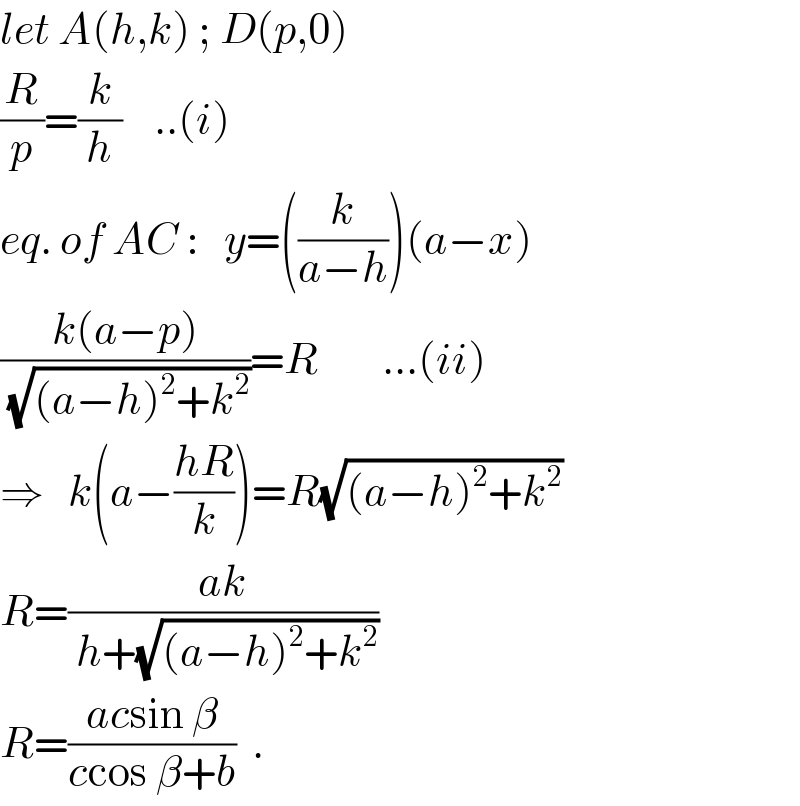
Question and Answers Forum
Question Number 123697 by ajfour last updated on 27/Nov/20

Commented by ajfour last updated on 27/Nov/20

Answered by mr W last updated on 27/Nov/20

Commented by mr W last updated on 27/Nov/20
![B(0,0) A(c cos β,c sin β) C(a,0) x_D =(R/(tan β)) eqn. of AC: (y/(x−a))=((c sin β)/(c cos β−a)) c sin β x+(a−c cos β)y−ac sin β=0 R^2 =(([c sin β (R/(tan β))−ac sin β]^2 )/(c^2 sin^2 β+(a−c cos β)^2 )) R^2 =(((R cos β−a sin β)^2 c^2 )/(a^2 +c^2 −2ac cos β)) R^2 =(((R^2 cos^2 β+a^2 sin^2 β−aR sin 2β)c^2 )/b^2 ) (c^2 cos^2 β−b^2 )R^2 −ac^2 sin 2β R+a^2 c^2 sin^2 β=0 ⇒R=((ac sin β)/(c cos β+b)) =((2a^2 c sin β)/(a^2 +c^2 −b^2 +2ab)) R=((4aΔ)/(a^2 +c^2 −b^2 +2ab)) with Δ=(√(s(s−a)(s−b)(s−c))) example: c=a, b=(√2)a Δ=(a^2 /2) ⇒R=((4a×(a^2 /2))/(2(√2)a))=(a/( (√2))) ✓](Q123722.png)
Commented by ajfour last updated on 27/Nov/20

Commented by ajfour last updated on 27/Nov/20

Commented by mr W last updated on 27/Nov/20

